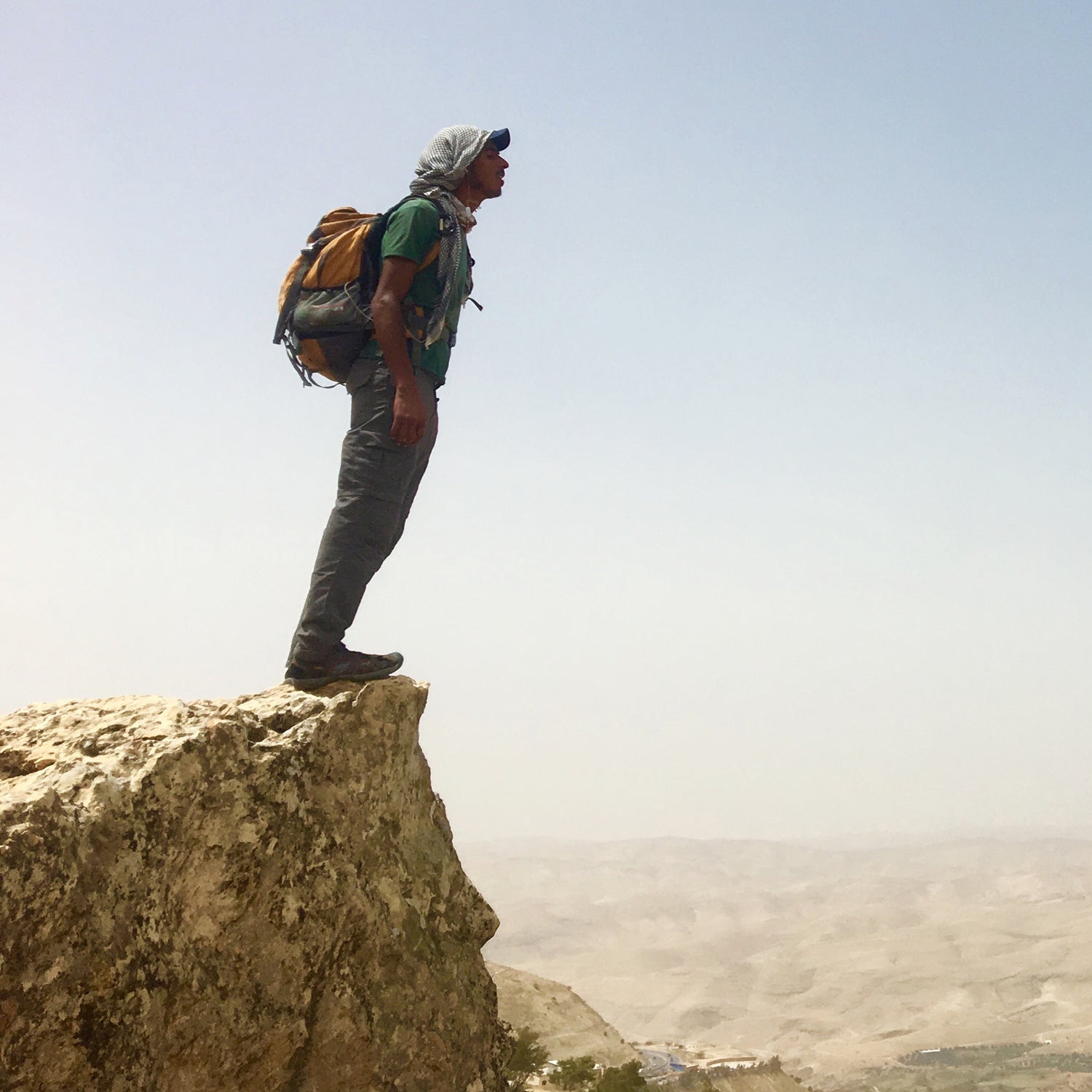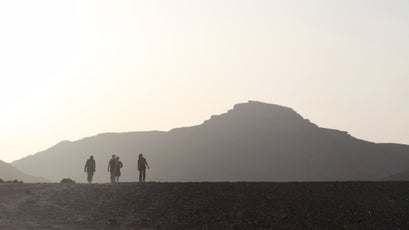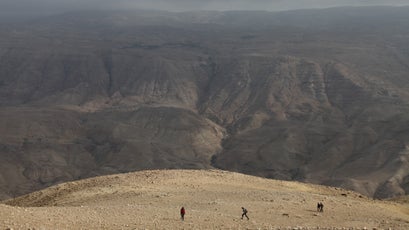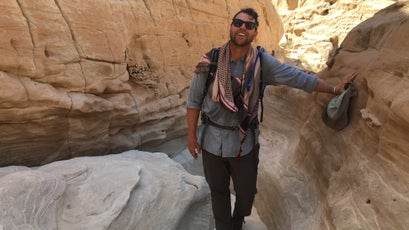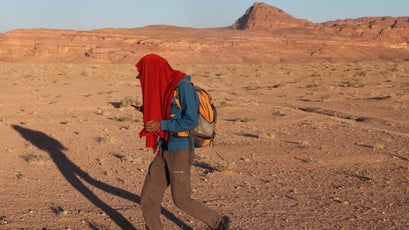To thru-hike is to explore the world in slow motion. This summer, I hiked Jordan’s new long-distance trail, where I witnessed the gradual shift from the bright-green north, with its flowing streams and cheery flowers, to the labyrinthine rock canyons of the dry center, and, eventually, a sea of daunting sand dunes that flow southeast toward Saudi Arabia.
I joined the inaugural trip the new trail in April, only a few months after the government checked and finalized the official GPS track (available for download from the Jordan Trail Association). The track divides the Jordan Trail into eight separate sections, each a four-day hike, for a total of 32 days and 400 miles if you tackle the whole thing. Our group broke some of the longer distances in half and added a few rest days, for a total of 45 days on the trail.
In a certain sense, the Jordan Trail is ancient, incorporating historic (and prehistoric) routes of human migration, trade, and pilgrimage. But in another sense, the trail is brand new, conceived by Tony Howard and Di Taylor, a British couple who first traveled to Jordan in the mid-1980s to explore the rock climbing potential among the monolithic stone formations in Wadi Rum. In the years since, a combination of trekkers, guides, local politicians, and business leaders have recruited local guides to help scout and build a continuous route running the full length of the country.
The trail’s elevation swings from several hundred feet below sea level to several thousand feet above it in the space of a few miles. Along the way, the Jordan Trail passes through some 52 small towns, which means there are plenty of opportunities to resupply, but there are also huge swaths that pass through hot, dry, empty regions. Homestays and guesthouses are more readily available in the northern half of Jordan, whereas the more remote south required camping almost every night. I averaged one hot shower per week.
It rained on the first night—a quick, hard cloudburst that shook my tent and then vanished, followed by the eerie howling of feral dogs. Only in the morning did I learn the uneasy yip yip shrieking was not from dogs, but rather from a group of jackals chasing the scent of the lingering barbecue in our camp. Temperatures fluctuated from around freezing at night to 106 degrees Fahrenheit in the desert. Constant perspiration meant salt intake was critical. Walking into camp one evening, I collapsed in pain, writhing in the dirt. The calf muscles in my left leg had seized into a ball so tight that I limped the entire last mile to camp. The doctor diagnosed my salt deficiency and prescribed potato chips.
On most days, I carried three liters of water in my hydration pack, along with a 1.5-liter bottle of electrolytes and rehydration solution. I would sometimes refill at lunch; on our hottest and hardest day, I downed eight liters of water before sunset. For the desert section from Petra to Wadi Rum, we retained the ornery William Shakespeare—a donkey that carried our emergency water supply over the driest and rockiest sections of the trail. While natural springs and shepherd wells are clearly marked, they may not be available year round. In the southern desert, organizing water drops is wise.
By far the best aspect of the Jordan Trail are the Jordanians themselves, who welcomed us at every encounter, beckoning us to join them for tea or dinner; handing over gifts of bread, garden vegetables, and homemade goat cheese; offering us water for washing, cooking and drinking; and even serenading us with songs and poetry. Months after I’ve returned home to the city, my pockets are still gritty with red sand. I find myself thanking strangers in Arabic, and every morning I shake out my boots, checking for scorpions—just in case.


